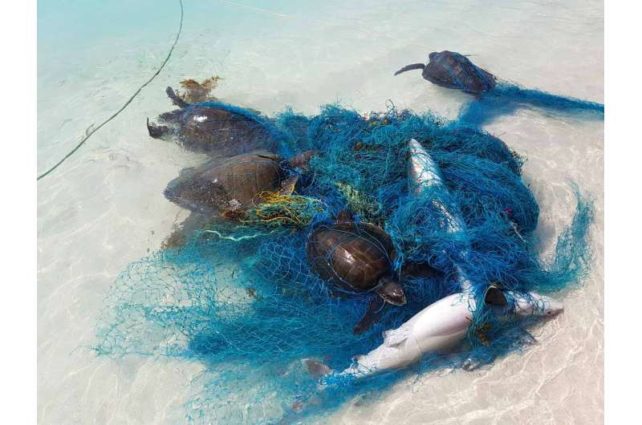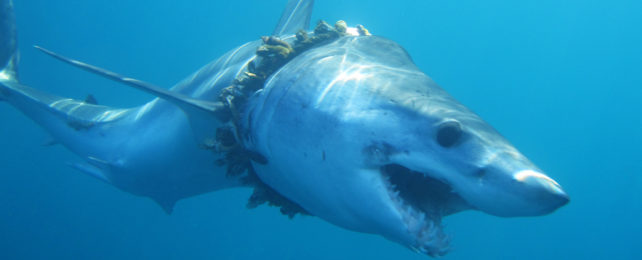Billions of hooks, millions of traps, and hundreds of thousands of kilometers of fishing line and nets fall into the ocean each year from commercial fishing ventures. Once lost to the wild, this drifting gear continues to snag helpless sea life in a phenomenon called ghost fishing.
These items pile onto the mountains of ocean pollution already creating massive challenges for wildlife around the world.
Now, new estimates by Australian researchers put this industrial waste into a new perspective, calculating enough fishing line falls into marine waters each year to encircle the entire planet a staggering 18 times.
"The data collected to create these estimates came directly from fishers themselves to inform our understanding of fishing gear losses at source," says marine socioecologist Kelsey Richardson from the University of Tasmania.
Richardson and colleagues interviewed 450 fishers across seven countries, surveying them on fishing gear use and losses as well as the factors they believe contribute to this deadly pollution.

From the US to Morocco, Indonesia, and New Zealand, the researchers found the types of sea vessels being used influenced the losses.
"Proportionately, more gear was lost from smaller fishing vessels," Richardson and team write in their paper, suggesting larger vessels could have better navigation and fishing tool technologies that reduce losses.
There were also much greater losses of trawl nets that hit the seafloor than those used at shallower depths. Bottom trawling is notoriously damaging to the environment, and with the loss of nets comes higher financial risks for the fishers, it seems. This practice supplies us with around a quarter of all wild-caught seafood.
Purse seine nets were lost more often compared to other types of nets. Bad weather also contributed to the risks of gear loss.
At the current rate gear is cast adrift, in 65 years there will be enough fishing nets to cover the entire planet, the team explains in The Conversation. This doesn't even include gear lost through recreational fishing.
While many categories of waste can cause problems in marine ecosystems, fishing gear causes a disproportionately greater impact on wildlife because it is specifically designed for capturing and killing animals, the researchers explain.
Ghost fishing impacts endangered species, as it can't discriminate. Sharks and rays, for example, which have declined by 70 percent in the last 50 years, become entangled in nets and wounded by longline hooks.
In 2019, a study reported over 1,000 instances of entangled sharks and rays.
"One example in the study is a shortfin mako shark with fishing rope wrapped tightly around it," University of Exeter marine biologist Kristian Parton said at the time.
"The shark had clearly continued growing after becoming entangled, so the rope – which was covered in barnacles – had dug into its skin and damaged its spine. There's a real animal welfare issue because entanglements can cause pain, suffering, and even death."
Researchers encourage people to report any sightings of these suffering animals.
The good news is that a self-reported stocktake of the percentage of fishing gear losses appears to be lower than estimates made in 2019.
"There have been increases in global fishing effort, as well as improvements in fishing technologies, including better opportunities to mark, track and recover fishing gears," explains Richardson.
"Our updated estimates help to highlight where efforts need to focus to support fisheries management and gear stewardship interventions to generate targeted solutions to reduce fishing gear ending up in our oceans."
These strategies include regular gear maintenance and repair, gear tracking, loss reporting and recovery, regulating the most destructive fishing practices, and encouraging good disposal practices, Richardson and colleagues recommend.
Their research was published in Science Advances.
